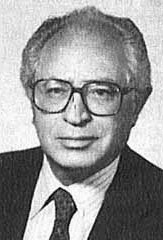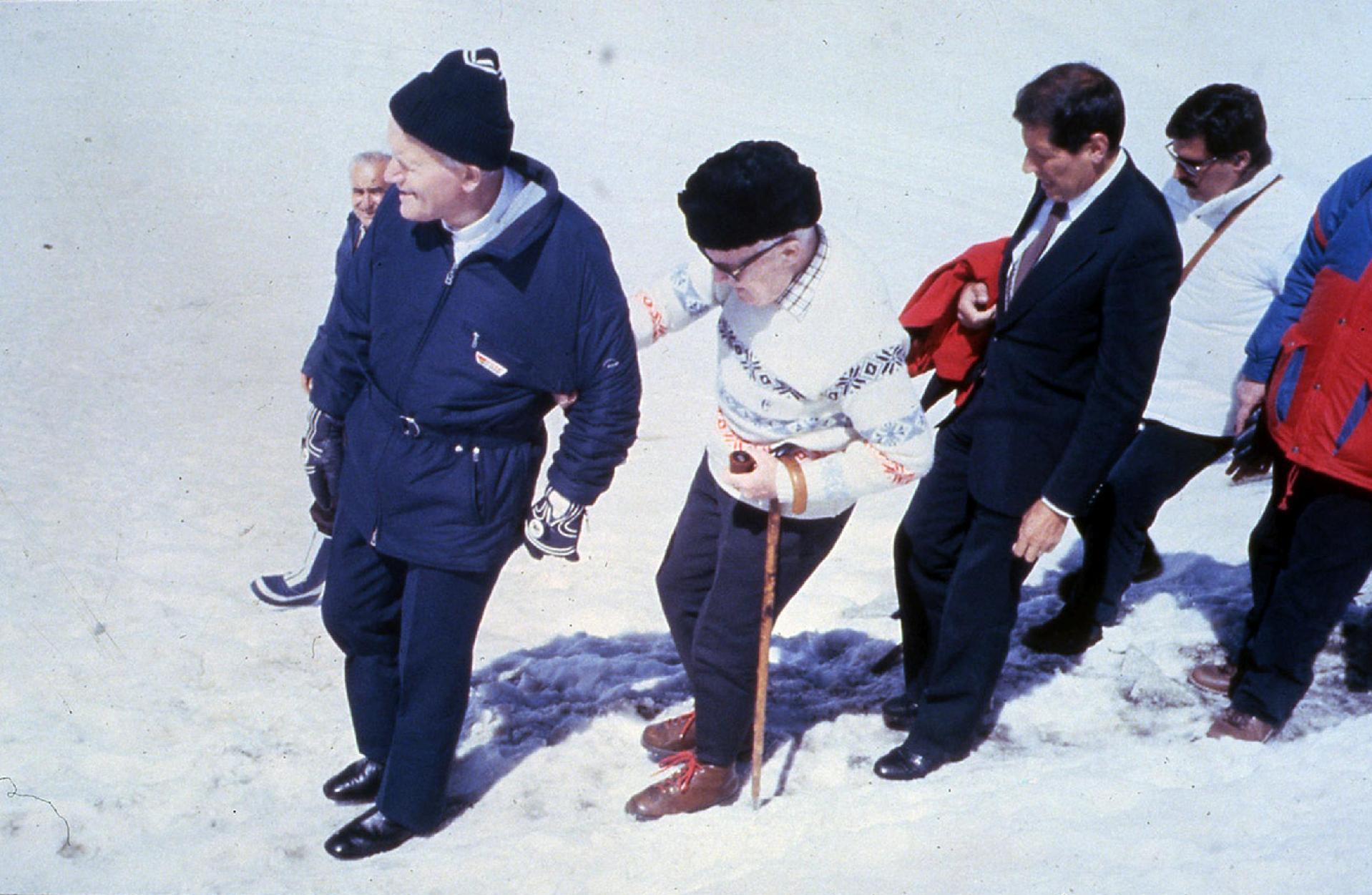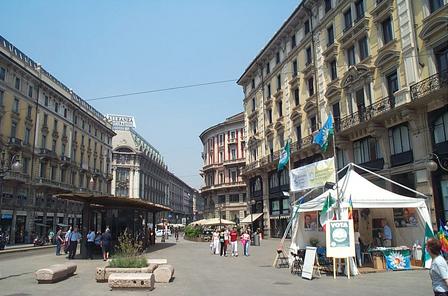|
Antonio Maccanico
Antonio Maccanico (4 August 1924 – 23 April 2013) was an Italian constitutional specialist and social liberal politician, who served in various capacities in the parliament and federal administrations of Italy. Early life and education Maccanico was born on 4 August 1924 in Avellino. He graduated in law at the University of Pisa in 1946. Career Maccanico began his career at the house of deputies as a referendary in June 1947. He worked in different commissions in the house. He also served as the general secretary in the office of the Italian President Sandro Pertini for nine years. He was the president of Italian investment bank, Mediobanca, from 1987 to 1988 which was privatised during his term. He succeeded Enrico Cuccia in the aforementioned post. Maccanico was appointed minister of regional affairs and institutional problems on 13 April 1988 and was in office until 13 April 1991. However, no significant institutional reforms were developed during his tenure. He was electe ... [...More Info...] [...Related Items...] OR: [Wikipedia] [Google] [Baidu] |
Italian Minister For Institutional Reforms
The Minister for Institutional Reforms (Italian: ''Ministro per le Riforme Istituzionali'') is one of the positions in the Cabinet of Italy, Italian government. The current minister is Elisabetta Casellati, a member of the Forza Italia (2013), Forza Italia, who held the office since 22 October 2022 in the cabinet of Giorgia Meloni. List of Ministers ;Parties * ** ** ** * ** ** ** ** ** ** ** ** ;Coalitions * ** ** * ** ** ** References {{Reflist Lists of government ministers of Italy, Institutional Reforms ... [...More Info...] [...Related Items...] OR: [Wikipedia] [Google] [Baidu] |
Rome
, established_title = Founded , established_date = 753 BC , founder = King Romulus (legendary) , image_map = Map of comune of Rome (metropolitan city of Capital Rome, region Lazio, Italy).svg , map_caption = The territory of the ''comune'' (''Roma Capitale'', in red) inside the Metropolitan City of Rome (''Città Metropolitana di Roma'', in yellow). The white spot in the centre is Vatican City. , pushpin_map = Italy#Europe , pushpin_map_caption = Location within Italy##Location within Europe , pushpin_relief = yes , coordinates = , coor_pinpoint = , subdivision_type = Country , subdivision_name = Italy , subdivision_type2 = Region , subdivision_name2 = Lazio , subdivision_type3 = Metropolitan city , subdivision_name3 = Rome Capital , government_footnotes= , government_type = Strong Mayor–Council , leader_title2 = Legislature , leader_name2 = Capitoline Assemb ... [...More Info...] [...Related Items...] OR: [Wikipedia] [Google] [Baidu] |
Sandro Pertini
Alessandro "Sandro" Pertini (; 25 September 1896 – 24 February 1990) was an Italian socialist politician who served as the president of Italy from 1978 to 1985. Early life Born in Stella (Province of Savona) as the son of a wealthy landowner, Alberto, he studied at a Salesian college in Varazze, and completed his schooling at the "''Chiabrera''" lyceum (high school) in Savona. His philosophy teacher was Adelchi Baratono, a reformist socialist who contributed to his approach to socialism and probably introduced him to the inner circles of the Ligurian labour movements. Pertini obtained a law degree from the University of Genoa. Aged 19 when Italy entered World War I on the side of the Triple Entente, Pertini opposed the war, but nonetheless enlisted in the army where he served as a lieutenant and was decorated for bravery. After the armistice in 1918, he joined the Unitary Socialist Party, PSU, then he settled in Florence where he also graduated in political science with a ... [...More Info...] [...Related Items...] OR: [Wikipedia] [Google] [Baidu] |
President Of Italy
The president of Italy, officially denoted as president of the Italian Republic ( it, Presidente della Repubblica Italiana) is the head of state of Italy. In that role, the president represents national unity, and guarantees that Italian politics comply with the Constitution. The president is the commander-in-chief of the Italian Armed Forces and chairs the High Council of the Judiciary. A president's term of office lasts for seven years. The incumbent president is former constitutional judge Sergio Mattarella, who was elected on 31 January 2015, and re-elected on 29 January 2022. Qualifications for office The framers of the Constitution of Italy intended for the president to be an elder statesman of some stature. Article 84 states that any Italian citizen who is fifty or older on election day and enjoys civil and political rights can be elected president. The article also states that the presidency is incompatible with any other office; therefore, the president-elect mu ... [...More Info...] [...Related Items...] OR: [Wikipedia] [Google] [Baidu] |
University Of Pisa
The University of Pisa ( it, Università di Pisa, UniPi), officially founded in 1343, is one of the oldest universities in Europe. History The Origins The University of Pisa was officially founded in 1343, although various scholars place its origins in the 11th century. It is certain, however, that from the middle of the 12th century Pisa had a “Universitas” in the original sense of the word, that is, a group of students who gathered around masters. It was during this period that Leonardo Fibonacci was born and worked. He was one of the greatest mathematicians in history who, through his work, synthesized the spirit and processes of Greek geometry and the tools of Arabic mathematics for the first time in Europe. The papal seal “In Supremae dignitatis”, issued by Pope Clement VI on 3 September 1343, granted the Studium in Pisa the title of Studium Generale with various exclusive privileges, making it universally recognised. In medieval times, the Studium Generale wa ... [...More Info...] [...Related Items...] OR: [Wikipedia] [Google] [Baidu] |
Pisa University
The University of Pisa ( it, Università di Pisa, UniPi), officially founded in 1343, is one of the oldest universities in Europe. History The Origins The University of Pisa was officially founded in 1343, although various scholars place its origins in the 11th century. It is certain, however, that from the middle of the 12th century Pisa had a “Universitas” in the original sense of the word, that is, a group of students who gathered around masters. It was during this period that Leonardo Fibonacci was born and worked. He was one of the greatest mathematicians in history who, through his work, synthesized the spirit and processes of Greek geometry and the tools of Arabic mathematics for the first time in Europe. The papal seal “In Supremae dignitatis”, issued by Pope Clement VI on 3 September 1343, granted the Studium in Pisa the title of Studium Generale with various exclusive privileges, making it universally recognised. In medieval times, the Studium Generale wa ... [...More Info...] [...Related Items...] OR: [Wikipedia] [Google] [Baidu] |
Democracy Is Freedom – The Daisy
Democracy is Freedom – The Daisy ( it, Democrazia è Libertà – La Margherita, DL), commonly known simply as The Daisy (''La Margherita''), was a centrist political party in Italy. The party was formed from the merger of three parties within the centre-left coalition: the Italian People's Party, The Democrats and Italian Renewal. The party president and leader was Francesco Rutelli, former mayor of Rome and prime ministerial candidate during the 2001 general election for The Olive Tree coalition, within which The Daisy electoral list won 14.5% of the national vote. The Daisy became a single party in February 2002. It was set up by former left-leaning Christian Democrats, centrists, social-liberals (former Liberals and former Republicans), as well as other left-wing politicians from the former Italian Socialist Party and Federation of the Greens. On 14 October 2007, DL merged with the Democrats of the Left to form the Democratic Party (PD). History The idea of unitin ... [...More Info...] [...Related Items...] OR: [Wikipedia] [Google] [Baidu] |
The Democrats (Italy)
The Democrats ( it, I Democratici, Dem) was a Centrism, centrist and social liberalism, social-liberal List of political parties in Italy, political party in Italy. The party was launched in 1999 by Romano Prodi, a few months after his dismissal as Prime Minister of Italy, Prime Minister and leader of The Olive Tree (Italy), The Olive Tree coalition. Three parties merged into The Democrats: the Democratic Union (Italy), Democratic Union, Italy of Values and The Network (political party), The Network. Also splinters from the Italian People's Party (1994), Italian People's Party joined. In 2002 The Democrats were merged into Democracy is Freedom – The Daisy, which would be merged into the Democratic Party (Italy), Democratic Party in 2007. History Early groups of "Olivists" were formed in 1995–1996, during the campaign for the 1996 Italian general election, 1996 general election, by close supporters of Prodi who were not members of any party of The Olive Tree (Italy), The Olive ... [...More Info...] [...Related Items...] OR: [Wikipedia] [Google] [Baidu] |
Democratic Union (Italy)
The Democratic Union ( it, Unione Democratica, UD) was a small social-liberal political party in Italy. It was founded in February 1996 by Antonio Maccanico, along with Willer Bordon and Giorgio Benvenuto (both members of Democratic Alliance), Valerio Zanone (a former leader of the Italian Liberal Party) and Giorgio La Malfa (leader of the Italian Republican Party). The party was a minor member of The Olive Tree, and formed the Populars for Prodi list with the Italian People's Party for the 1996 general election, electing five deputies and one senator. The party was part of the Prodi I Cabinet, with Maccanico becoming minister for Communications, and later the D'Alema I Cabinet, D'Alema II Cabinet and Amato II Cabinet with Maccanico minister of Institutional Reforms. In 1999 the party joined Romano Prodi Romano Antonio Prodi (; born 9 August 1939) is an Italian politician, economist, academic, senior civil servant, and business executive who served as the te ... [...More Info...] [...Related Items...] OR: [Wikipedia] [Google] [Baidu] |
Independent Politician
An independent or non-partisan politician is a politician not affiliated with any political party or bureaucratic association. There are numerous reasons why someone may stand for office as an independent. Some politicians have political views that do not align with the platforms of any political party, and therefore choose not to affiliate with them. Some independent politicians may be associated with a party, perhaps as former members of it, or else have views that align with it, but choose not to stand in its name, or are unable to do so because the party in question has selected another candidate. Others may belong to or support a political party at the national level but believe they should not formally represent it (and thus be subject to its policies) at another level. In running for public office, independents sometimes choose to form a party or alliance with other independents, and may formally register their party or alliance. Even where the word "independent" is used, s ... [...More Info...] [...Related Items...] OR: [Wikipedia] [Google] [Baidu] |
Italian Republican Party
The Italian Republican Party ( it, Partito Repubblicano Italiano, PRI) is a liberal and social-liberal political party in Italy. Founded in 1895, the PRI is the oldest political party still active in Italy. The PRI has old roots and a long history that began with a left-wing position, claiming descent from the political thought of Giuseppe Mazzini and Giuseppe Garibaldi. The early PRI was also known for its anti-clerical, anti-monarchist republican and later anti-fascist stances. While maintaining the latter three traits, during the second half of the 20th century the party moved slowly to the centre of the political spectrum, becoming increasingly economically liberal. As such, the PRI was a member of the European Liberal Democrat and Reform Party (ELDR) from 1976 to 2010. After 1949 the party was a member of the pro-NATO alliance formed also by Christian Democrats, Social Democrats and Liberals, enabling it to participate in most governments of the 1950s. In 1963 the PRI he ... [...More Info...] [...Related Items...] OR: [Wikipedia] [Google] [Baidu] |
Italian Communist Party
The Italian Communist Party ( it, Partito Comunista Italiano, PCI) was a communist political party in Italy. The PCI was founded as ''Communist Party of Italy'' on 21 January 1921 in Livorno by seceding from the Italian Socialist Party (PSI). Amadeo Bordiga, Antonio Gramsci, and Nicola Bombacci led the split. Outlawed during the Fascist regime, the party played a major role in the Italian resistance movement. It changed its name in 1943 to PCI and became the second largest political party of Italy after World War II, attracting the support of about a third of the vote share during the 1970s. At the time, it was the largest communist party in the West, with peak support reaching 2.3 million members, in 1947, and peak share being 34.4% of the vote (12.6 million votes) in the 1976 general election. The PCI transitioned from doctrinaire Marxism–Leninism to democratic socialism by the 1970s or the 1980s and adhered to the Eurocommunist trend. In 1991, it was dissolved and re-l ... [...More Info...] [...Related Items...] OR: [Wikipedia] [Google] [Baidu] |






